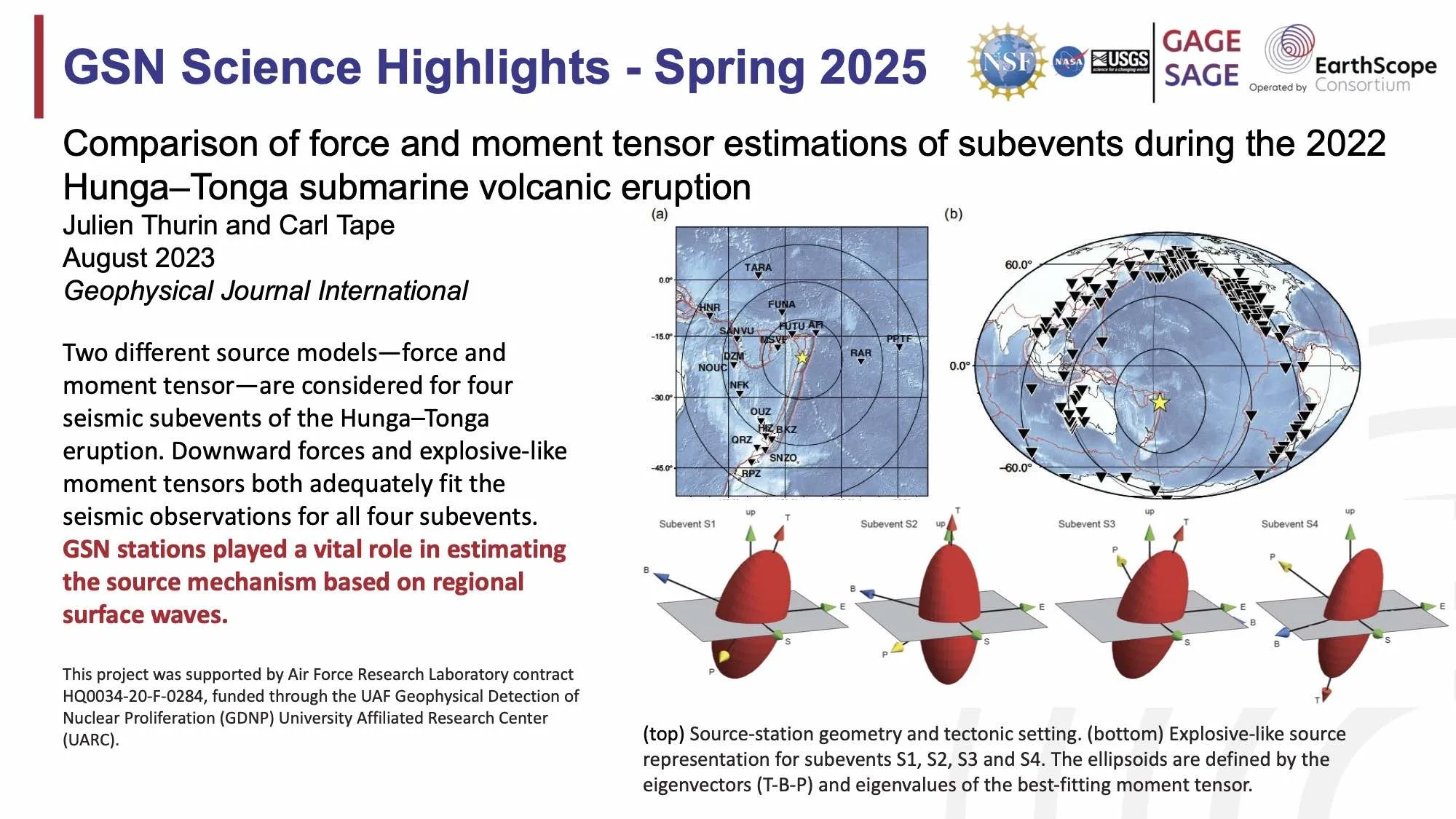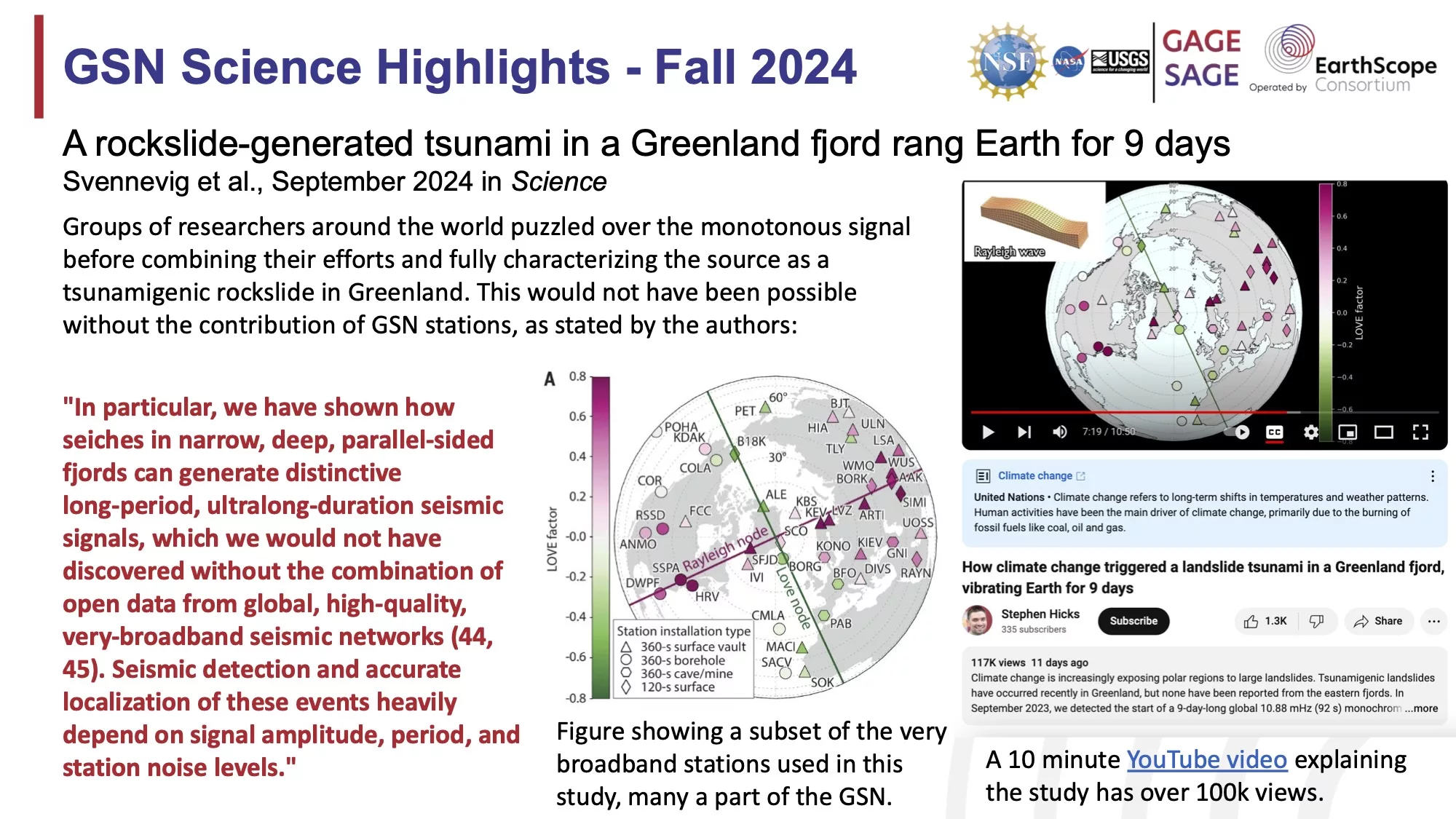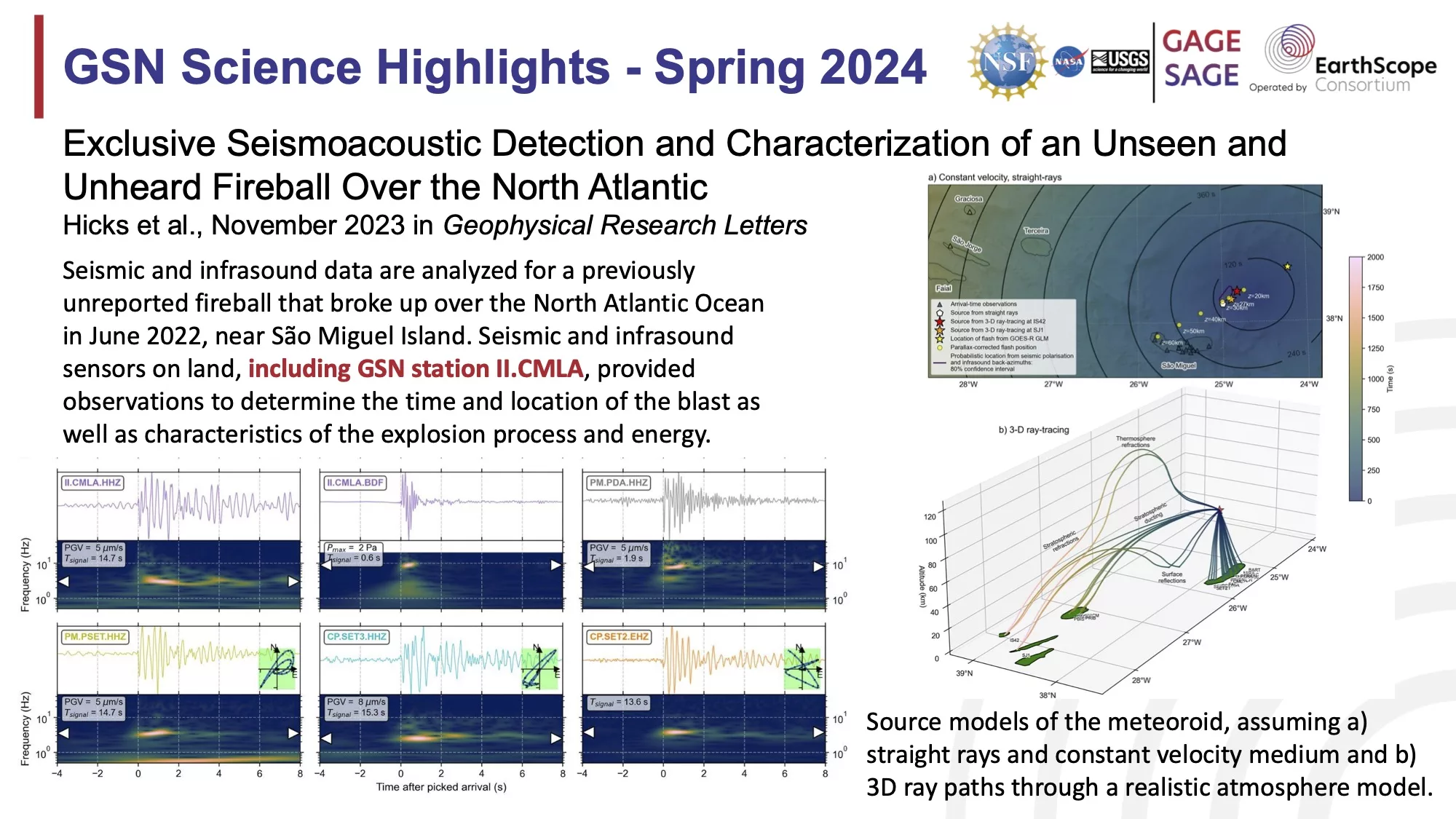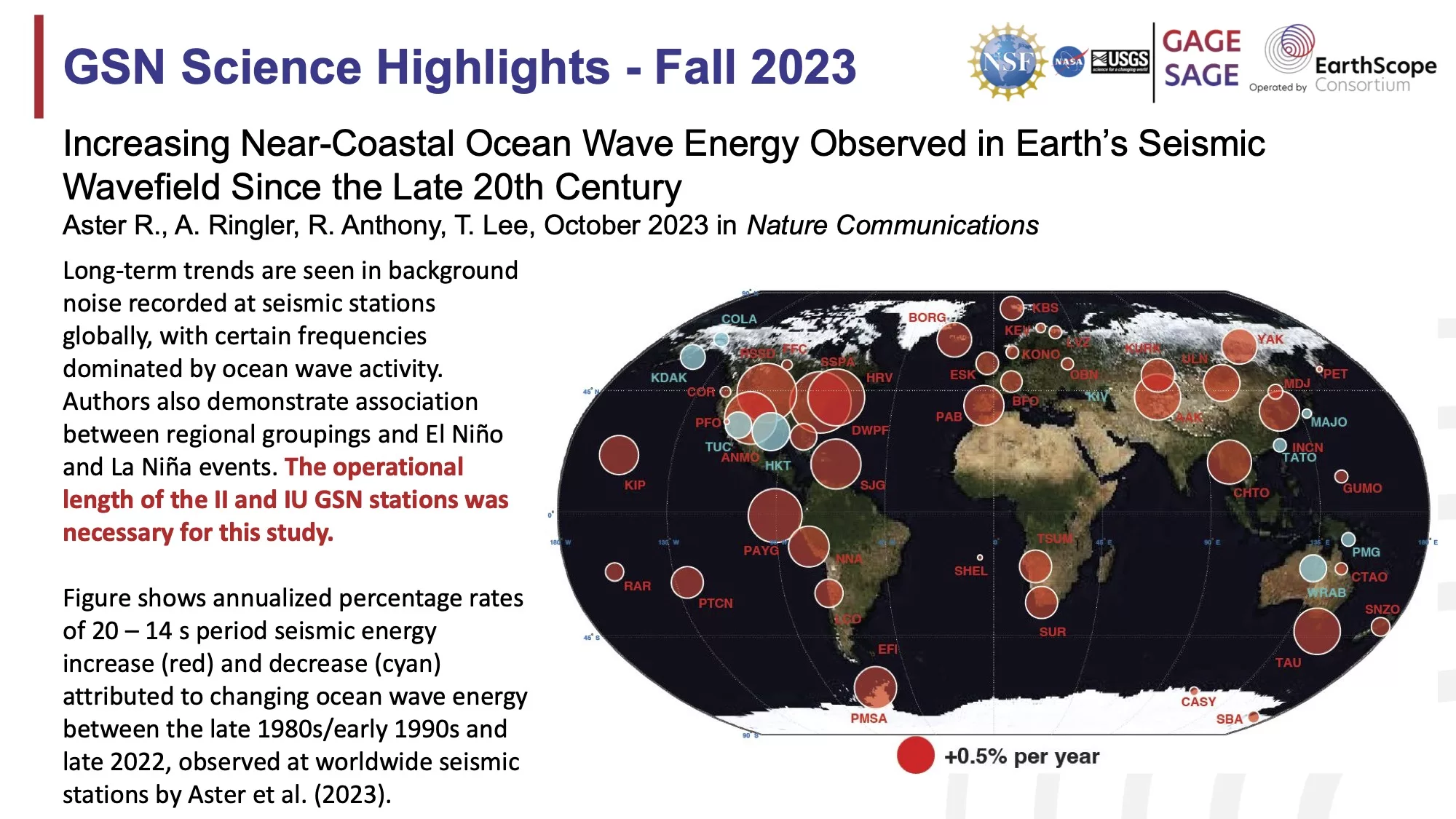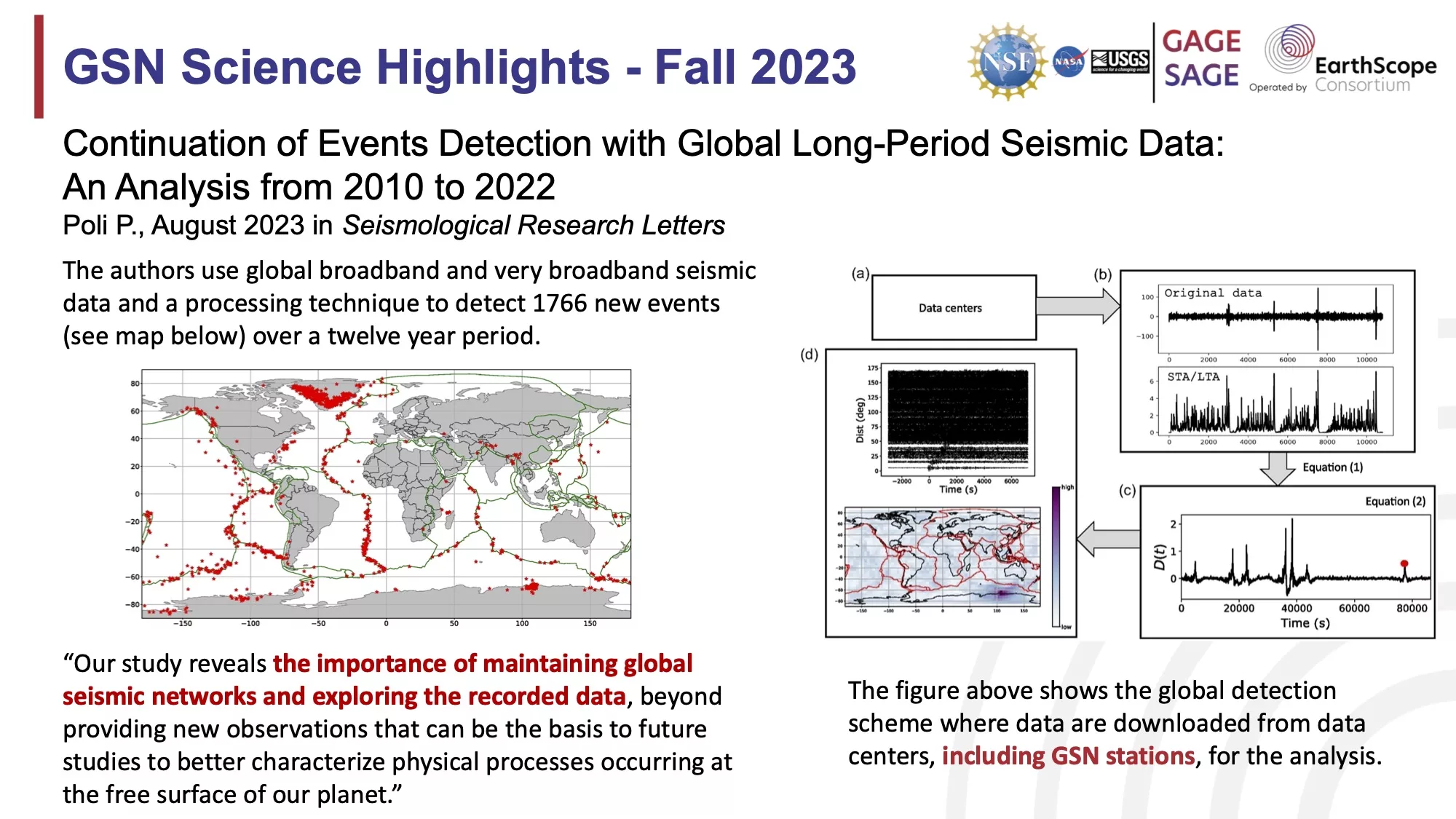The Global Seismographic Network (GSN) is an approximately 150 station, globally distributed, state-of-the-art digital seismic network that provides free, realtime, open access data. The GSN is a cooperative scientific facility operated jointly by the National Science Foundation (NSF) and the U.S. Geological Survey (USGS), in coordination with the international community. This multi-use scientific facility is a societal resource for Earth observations, monitoring, research, and education.
EarthScope, with funding from the National Science Foundation, provides overall guidance and oversight for the GSN as well as operations of the network code II stations. Additional stations under network codes IU, CU, and IC are operated by the USGS Albuquerque Seismological Laboratory (ASL), who also uses the guidance of the EarthScope GSN Advisory Committee (GSNAC). The remaining stations are designated affiliated stations, meeting the design goals of the GSN but operated outside the funding of NSF and USGS. Operations of the NSF-funded portion of the GSN transitioned from the University of California, San Diego/Project IDA to the EarthScope Consortium in September 2024. Questions can be directed to gsn@earthscope.org.
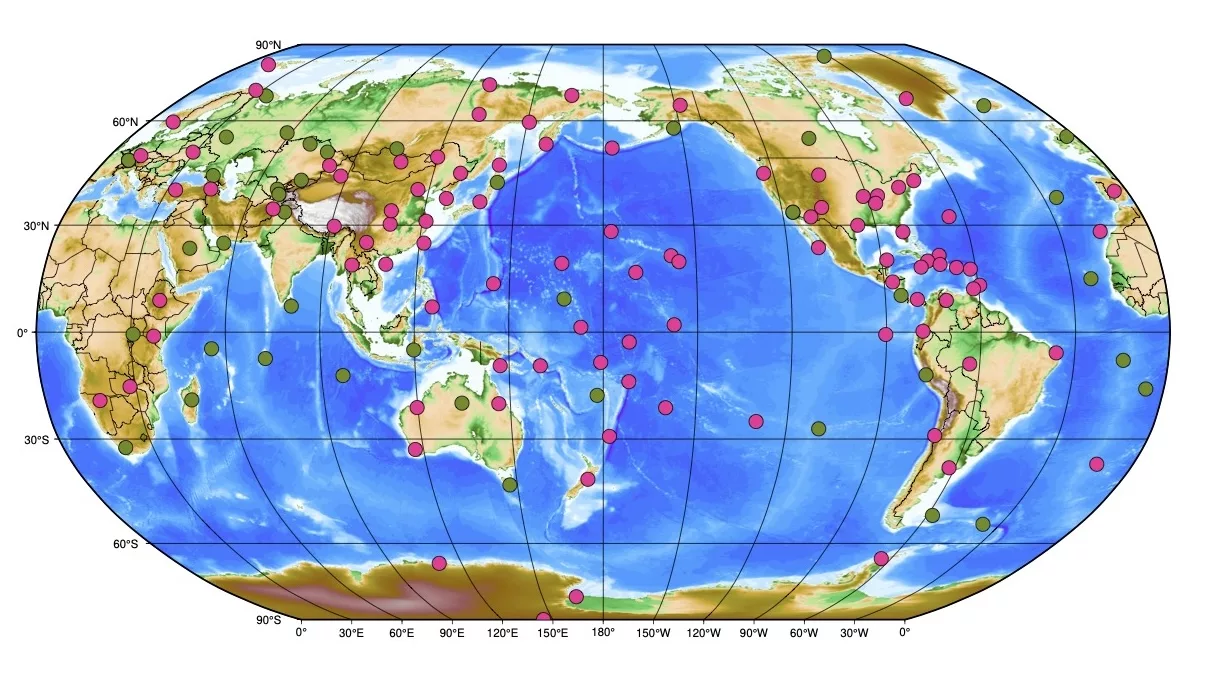
The stations of the GSN attempt to obtain the best possible recording capability, balanced with global geographic coverage. GSN instrumentation measures and records with high fidelity all seismic vibrations possible from high-frequency, strong ground motions near an earthquake to the slowest global Earth oscillations excited by great earthquakes. Seismology has been the primary focus in the creation of the GSN, but the infrastructure is inherently multi-use and additional sensors like microbarographs, GPS, and meteorological sensors are installed at a subset of stations. GSN station distribution and station equipment is based on the GSN Design Goals document.
The GSN Advisory Committee (GSNAC) advises the NSF SAGE Facility (via the Network Instrumentation Advisory Committee) and the USGS on policies to deploy and operate the network, to ensure its integrity and long-term viability, to rapidly disseminate data collected by the GSN, and coordinate GSN linkages with other networks around the world. GSN is coordinated internationally within the International Federation of Digital Seismograph Networks (FDSN), of which EarthScope is a founding member.
Science and Technological Applications
The GSN, together with the USGS National Earthquake Information Center (NEIC), are principal global sources of data and information for earthquake locations, earthquake hazard mitigation, and earthquake emergency response. In collaboration with National Oceanic and Atmospheric Administration (NOAA) Tsunami Warning Center, Japanese Meteorological Agency (JMA), and the Joint Australian Tsunami Warning Centre, the GSN provides essential data for tsunami warning response globally. The GSN works closely with the International Monitoring System (IMS) for the Comprehensive Nuclear-Test-Ban Treaty Organization (CTBTO), where nearly 30 GSN stations are now linked directly to the CTBTO International Data Centre.
To learn more about how all this works and the science it supports, visit our What is geophysics? pages.
More Information
- USGS – GSN and Albuquerque Seismological Laboratory
- Virtual Network Code _GSN
- GSN Design Documents (2002, 1985, 1984)
- GSN Review Documents (2015, 2003)
- GSN Publications (Wilson et al. 2023, Davis et al. 2023, Ringler et al. 2022, Staats et al. 2023)


